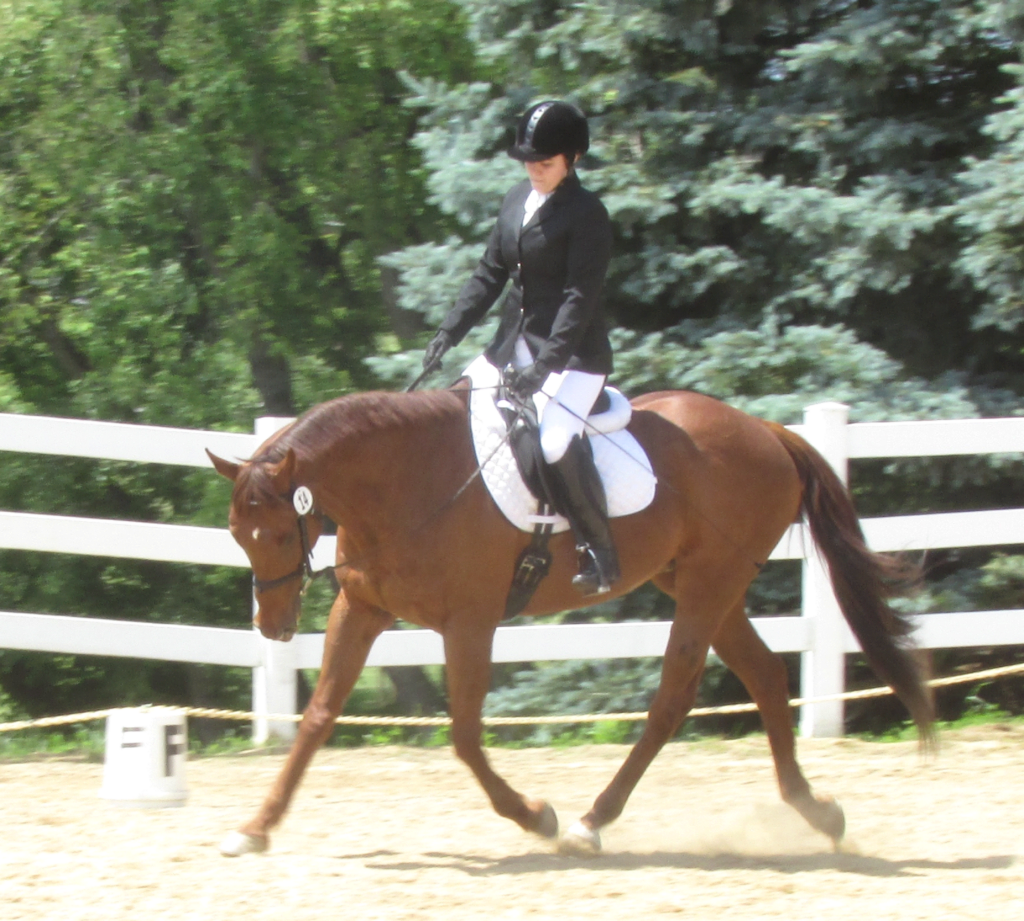From Wikipedia: Dressage; a French term, most commonly translated to mean “training.”
What does the word dressage mean? It means training. Training is what most of us do when we ride our horses. I am just not sure why so many riders differentiate between a horse being a dressage horse and one being a hunter? All hunter riders school flat work (or dressage) to train over fences and many dressage horses jump because it’s fun and good athletic training. However, there seems to be a divide between what riders tell their peers: I am a hunter rider, I am a dressage rider. How about, I am an equestrian!
No matter if you show over fences or if you pay a dressage judge to evaluate your training in a “dressage test” we are all just training our horses to perform the best they can with our personal riding skills as athletes.
Training level or basic training for a dressage horse is the horse being schooled at all three gaits and in both directions. Showing Training Level dressage shows the judge how well a horse has been trained in both directions and at all three gaits. This basic training should show the horse moving “unconstrained” with the rider. When the horse moves up the levels the circles get smaller to strengthen and supple the horse as the horse improves in collecting and extending the gaits. The hunter horse is evaluated in its way of going over a fence and then the jumps get bigger as the horse moves up the levels. Certainly, better flat work and precision is required between the fences as the horse moves up the hunter levels. Just as a dressage horse advancing requires more precision and refinement of training so it is with all disciplines of riding.
Event riders on the other hand, do all three events: dressage, stadium and cross country jumping. I don’t know why, but I constantly hear that the event riders don’t like dressage/training and just tolerate the test to get to the fences. (Sad face.) One of the first ingredients for training a horse is relaxation. Wouldn’t you want a relaxed ride when you ride cross country or fences in general? I remember in the day there was a term for galloping, it was called a “hand gallop.” It meant that the horse was on the aids or galloping “in hand,” or in control. Not just gone with the wind! (Hee Haw, I suppose there is time for that too.)
There is no doubt that training a horse is discipline and perhaps that is the problem. We are so used to easy, “ready made things” and training a horse requires patience time and discipline. Also, learning to ride correctly requires a lot of hard work, dedication, time and discipline. Learning how to put a horse straight – whether over a fence or down centerline and then bending it correctly in both directions requires what is called “equestrian tact” and this is developed over years and countless hours in the saddle. As I say, our horses or riders don’t come out of the Cracker Jack box already pre-assembled. We have to work to put it all together.
Dressage merely means training a horse. But we can use fancy words like laterally (side to side) or longitudinally (front to back), but all horses in any discipline need to be trained on both sides and “over the back” no matter if you are merely riding on the flat or over fences.
As an equestrian who trains horses in dressage, I even fall into the trap of saying I teach “dressage” to persons who inquire about lessons. Really, I should say, I teach “equestrian tact” or better yet, I’ll teach you how to ride and then learn how to gymnastically train your horse. Then voila, … dressage! And here we go again, and the cycle continues…
Want to be judged in a “dressage test,” or see how well you are schooling your horse on the flat by performing a dressage test in the comfort of your own arena? Go to www.myvirtualequestrian.net. This a program offered by a local equestrian group Three Rivers Equestrian Association.



